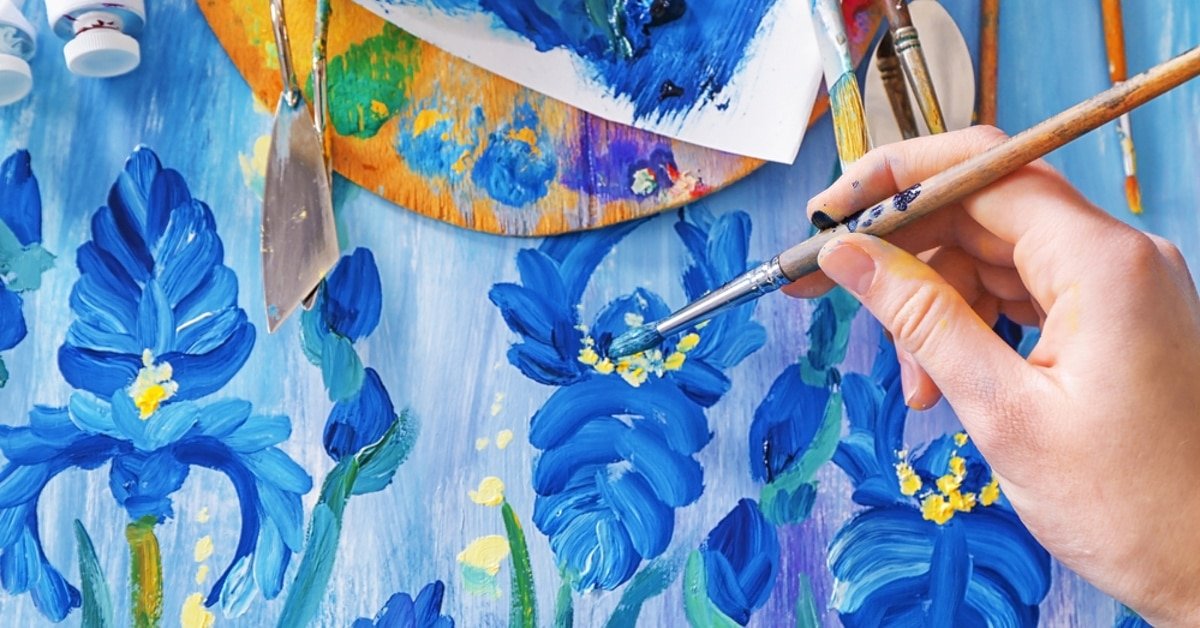If you want to improve your art, learning the top acrylic painting techniques to master is essential. These techniques help you create beautiful, unique paintings. Whether you are a beginner or experienced, you will find these tips helpful. Let’s explore how you can use acrylic paints to make your art stand out.

Why Learn Acrylic Painting Techniques?
Versatility of Acrylic Paints
Acrylic paints are easy to use. You can mix them with water or apply them thickly.
Quick Drying Time
Acrylics dry fast, so you can finish your paintings more quickly.
Easy to Fix Mistakes
If you make an error, just paint over it! Acrylics allow endless corrections.
Basic Techniques to Start With
Layering
Build Depth
Layering helps you add depth to your painting. Start with lighter colors and add darker shades on top.
Use Transparent Colors
Thin your paint with water to create transparent layers for a smooth look.
Blending
Smooth Transitions
Blending allows you to create soft transitions between colors. Use a damp brush to merge colors gently.
Practice on Small Areas
Start blending on smaller parts of your painting to improve your control.
Advanced Techniques to Explore
Dry Brushing
Add Texture
Dry brushing is perfect for creating rough textures. Use a brush with little paint and drag it lightly over the surface.
Highlight Details
This technique works well for adding highlights or fine details.
Impasto
Use Thick Paint
Apply paint directly with a palette knife to create raised, textured surfaces.
Experiment with Layers
Add multiple layers for more depth and a three-dimensional effect.
Creative Acrylic Painting Techniques
Splattering
Add Fun Effects
Dip a brush in paint and flick it onto the canvas. This creates playful, abstract patterns.
Control the Splatter
Use different brushes and flicking motions to vary the effect.
Glazing
Enhance Colors
Glazing involves applying thin layers of transparent paint. It makes your colors more vibrant.
Create Shadows
Use glazing to add shadows and highlights for a realistic look.
Tools and Materials for Acrylic Painting
Brushes
Flat Brushes
Flat brushes are great for bold strokes and large areas.
Round Brushes
Round brushes help with fine details and lines.
Palette Knives
Mix Paints
Use a palette knife to mix your colors thoroughly.
Apply Paint
They are also useful for applying thick layers of paint.
Canvas Options
Stretched Canvas
This is the most popular choice for acrylic painting.
Canvas Boards
These are lightweight and easy to store.
Tips for Mastering Acrylic Painting
Experiment Often
Try New Techniques
Experimenting helps you discover your unique style.
Combine Techniques
Mix techniques like glazing and dry brushing for unique effects.
Keep Practicing
Paint Regularly
The more you practice, the better you become.
Learn from Mistakes
Every mistake teaches you something new.
Use Proper Care
Clean Your Brushes
Wash your brushes immediately after use to prevent damage.
Store Paints Properly
Seal your acrylic paints tightly to keep them from drying out.
Inspire Your Creativity
Study Other Artists
Observe Techniques
Look at paintings by other artists to learn how they use acrylics.
Attend Workshops
Workshops are great for hands-on learning and new ideas.
Keep a Journal
Sketch Ideas
Write down or sketch your ideas before starting a painting.
Track Progress
Record what works and what doesn’t to improve over time.
Conclusion
Learning the top acrylic painting techniques to master will make your art more impressive. Start with basic techniques like layering and blending. Then, explore advanced methods such as dry brushing and impasto. By practicing regularly and experimenting, you can create stunning acrylic paintings that showcase your skills. Keep learning, stay creative, and enjoy the journey of mastering acrylic art!

